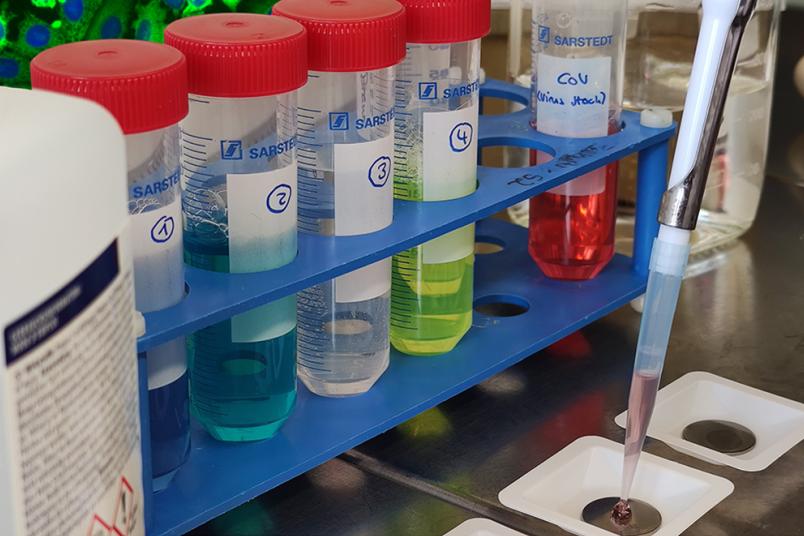
Medicine
How long coronaviruses persist on surfaces and how to inactivate them
A review article summarises everything that researchers know about the lifetime of corona viruses on surfaces and the effect of disinfectants.
How long do corona viruses persist on surfaces such as door handles or hospital bedside tables? Which methods can be used to kill them effectively? A research team from Greifswald and Bochum has compiled all published data that are known to researchers today and published them in the Journal of Hospital Infection on 6 February 2020.
Transmission via droplets, hands and surfaces
The novel coronavirus 2019-nCoV is making headlines worldwide. Since there is no specific therapy against it, the prevention of infection is of particular importance in order to stem the epidemic. Like all droplet infections, the virus can spread via hands and surfaces that are frequently touched. “In hospitals, these can be door handles, for example, but also call buttons, bedside tables, bed frames and other objects in the direct vicinity of patients, which are often made of metal or plastic,” explains Professor Günter Kampf from the Institute of Hygiene and Environmental Medicine at the Greifswald University Hospital.
Together with Professor Eike Steinmann, head of the Department for Molecular and Medical Virology at Ruhr-Universität Bochum (RUB), he has compiled comprehensive findings from 22 studies on coronaviruses and their inactivation for a future textbook. “Under the circumstances, the best approach was to publish these verified scientific facts in advance, in order to make all information available at a glance,” says Eike Steinmann.
Infectious on surfaces for up to nine days
The evaluated studies, which focus on the pathogens Sars coronavirus and Mers coronavirus, showed, for example, that the viruses can persist on surfaces and remain infectious at room temperature for up to nine days. On average, they survive between four and five days. “Low temperature and high air humidity further increase their lifespan,” points out Kampf.
Tests with various disinfection solutions showed that agents based on ethanol, hydrogen peroxide or sodium hypochlorite are effective against coronaviruses. If these agents are applied in appropriate concentrations, they reduce the number of infectious coronaviruses by four so-called log steps within one minute: this means, for example, from one million to only 100 pathogenic particles. If preparations based on other active ingredients are used, the product should be proven to be at least effective against enveloped viruses (“limited virucidal activity”). “As a rule, this is sufficient to significantly reduce the risk of infection,” explains Günter Kampf.
Findings should be transferable to 2019-CoV
The experts assume that the results from the analyses of other coronaviruses are transferable to the novel virus. “Different coronaviruses were analysed, and the results were all similar,” concludes Eike Steinmann.